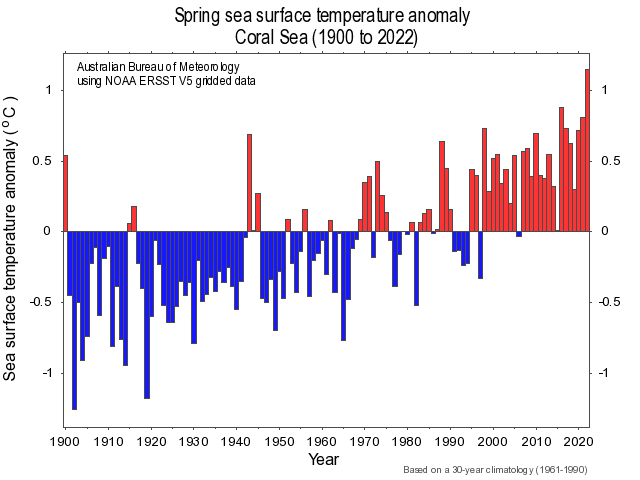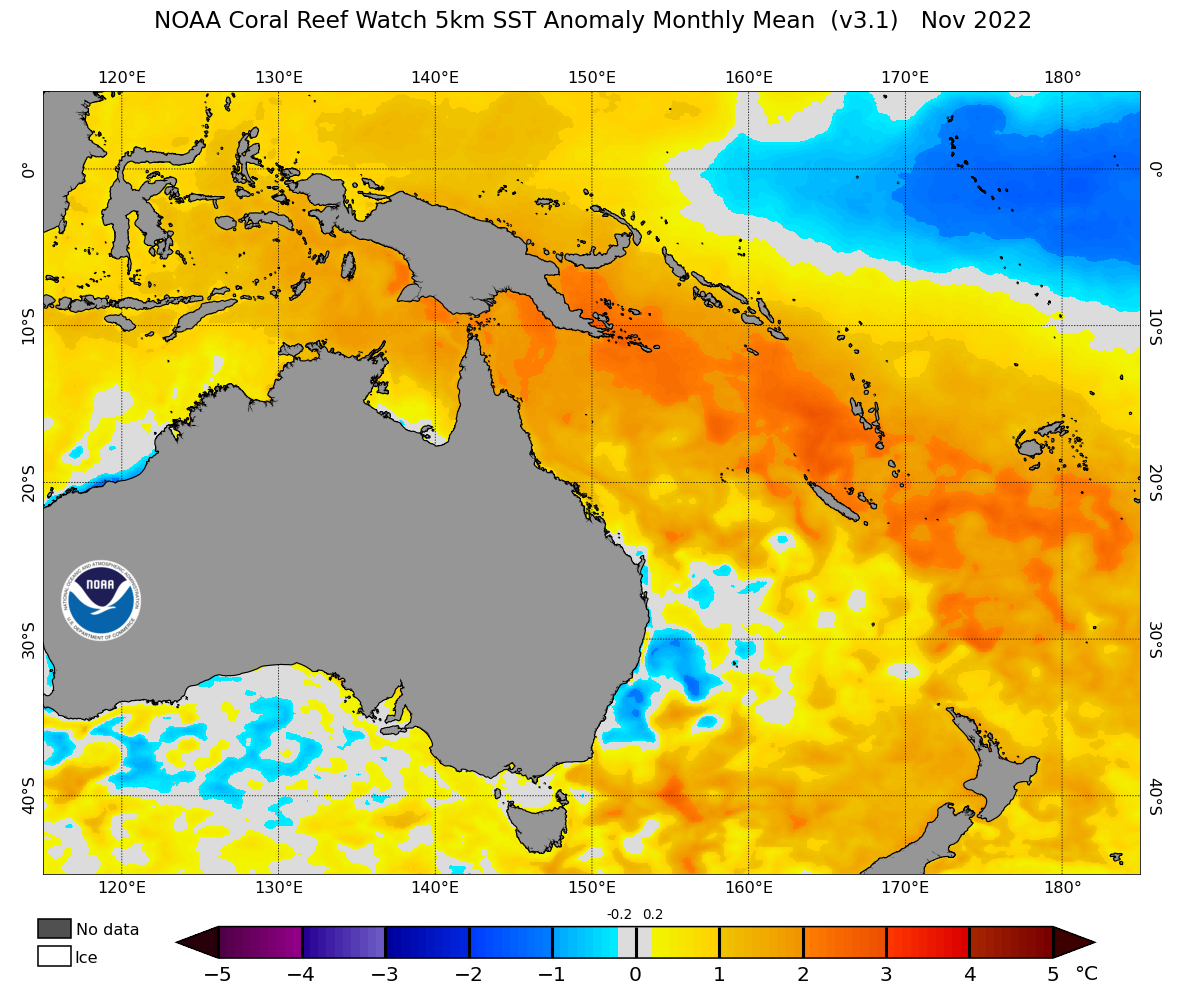Coral Sea's warmest spring on record
The Coral Sea just had its warmest spring on record, raising the likelihood of an active tropical cyclone season in Australia’s eastern tropics.
The Coral Sea has been running at record warm temperatures since the middle of 2022. Based on sea surface temperatures, every calendar month between June and November set a new monthly record in the Coral Sea, making winter and spring both record warm seasons.
The sea surface temperature in the Coral Sea during spring was +1.15ºC warmer than the 1961 to 1990 average, making this its first spring with an anomaly above 1ºC. The previous warmest spring in the Coral Sea was in 2016, which had an anomaly of +0.88ºC compared to the long-term average.

Image: Coral Sea spring sea surface temperature anomalies between 1900 and 2022. Source: Bureau of Meteorology
The exceptionally warm Coral Sea also helped the Australian region as a whole register its 2nd warmest spring on record. Australia’s 2022 spring sea surface temperature anomaly was +0.76ºC compared to 1961 to 1990, just behind +0.77ºC from 2010.
In addition to the background influence of rising global ocean temperatures, La Nina played a major role in causing this year’s run of record warmth in the Coral Sea. La Nina enhances the equatorial trade wind over the Pacific Ocean, which causes warm water to pile up on the western side of the tropical Pacific, to the northeast of Australia.

Image: Mean sea surface temperature anomaly in November, 2022. Source: NOAA Coral Reef Watch
Some of the possible impacts of substantially warmer-than-average water in the Coral Sea this summer are:
- An increased risk of coral bleaching in the Great Barrier Reef
- An increased risk of tropical cyclone activity to the northeast of Australia
Tropical cyclones draw their energy from warm ocean temperatures. The warmer the water, the more energy these powerful and dangerous weather systems have at their disposal.
The Bureau of Meteorology has predicted a 70 percent chance of an above average number of tropical cyclones in the Australia’s Eastern Region this year.